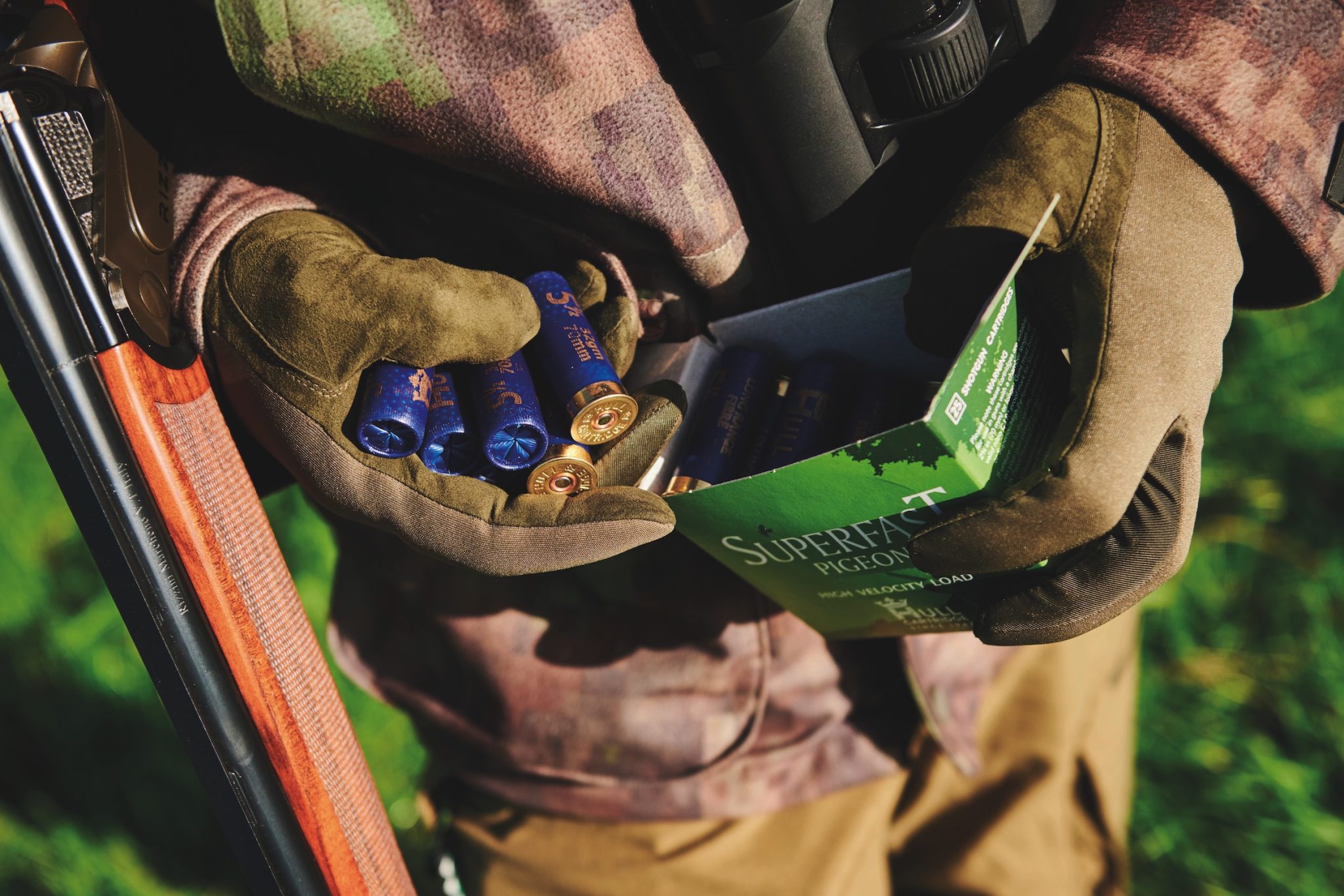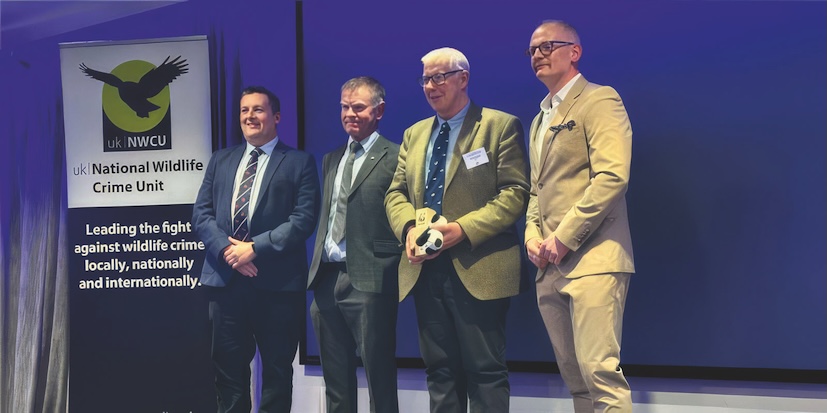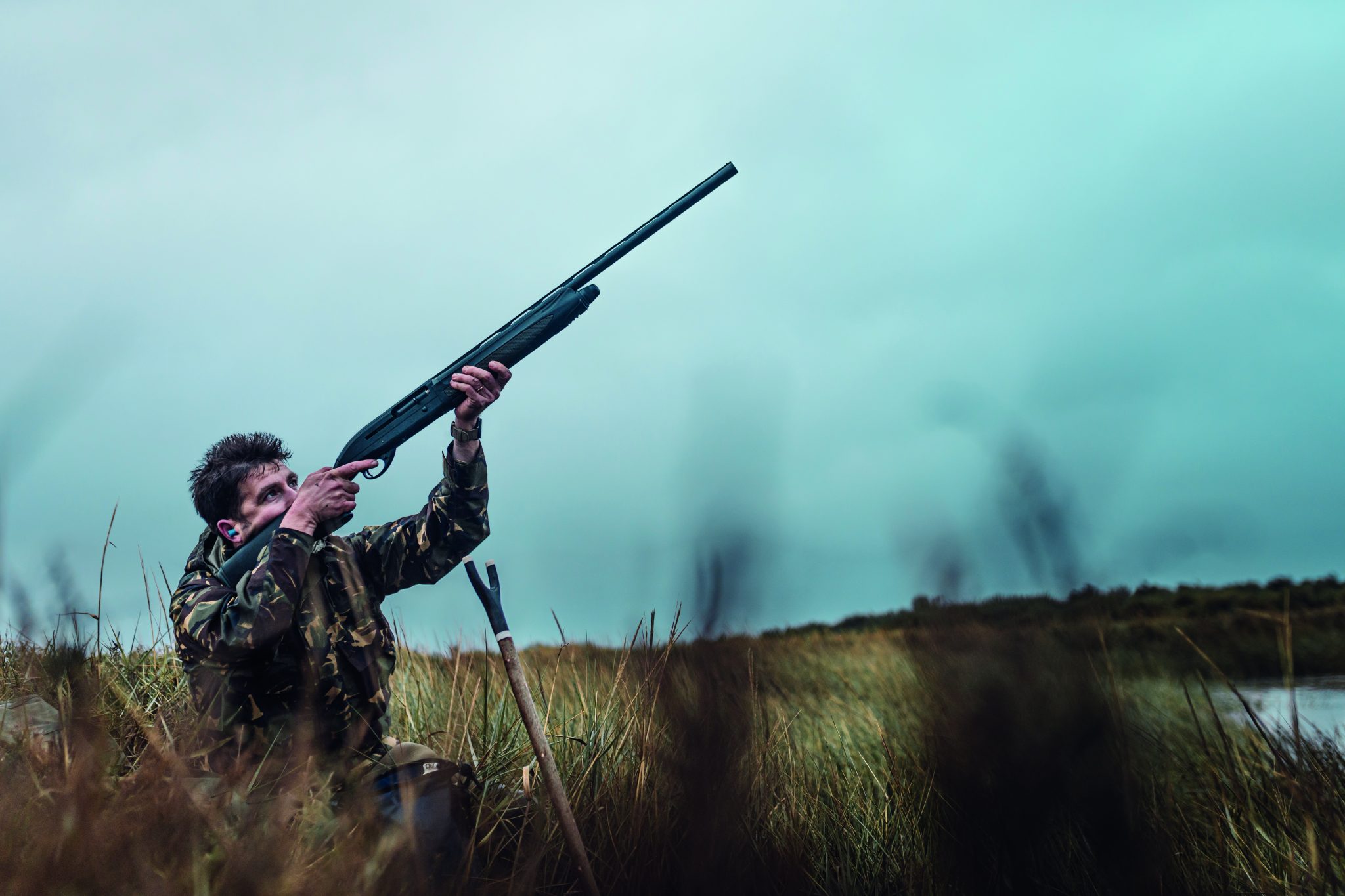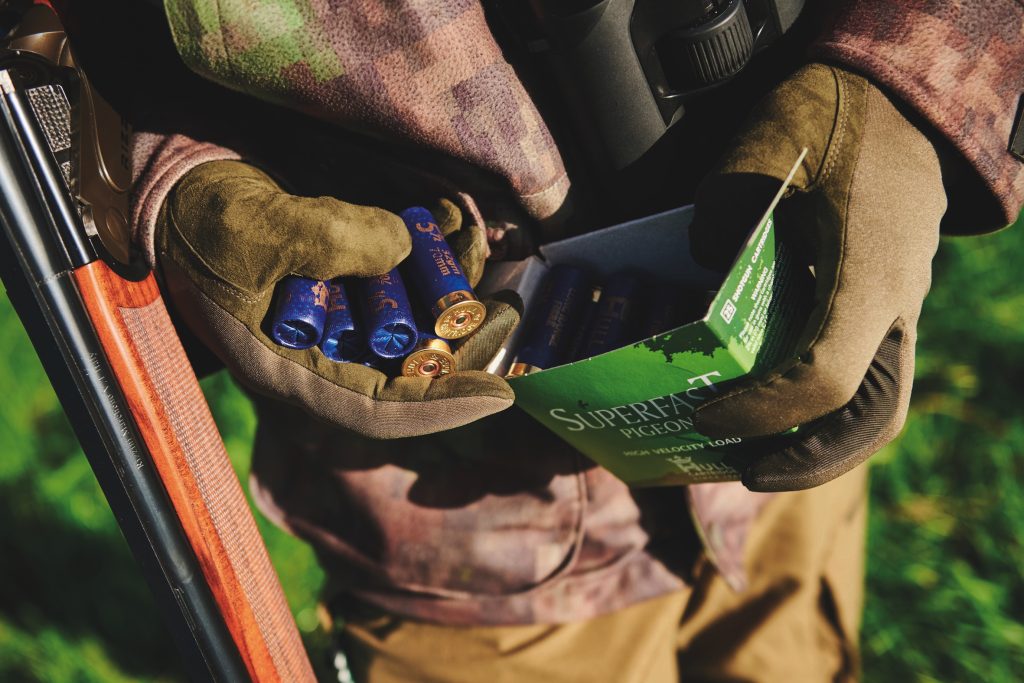Win CENS ProFlex DX5 earplugs worth £1,149 – enter here
20 things you should know about George Digweed
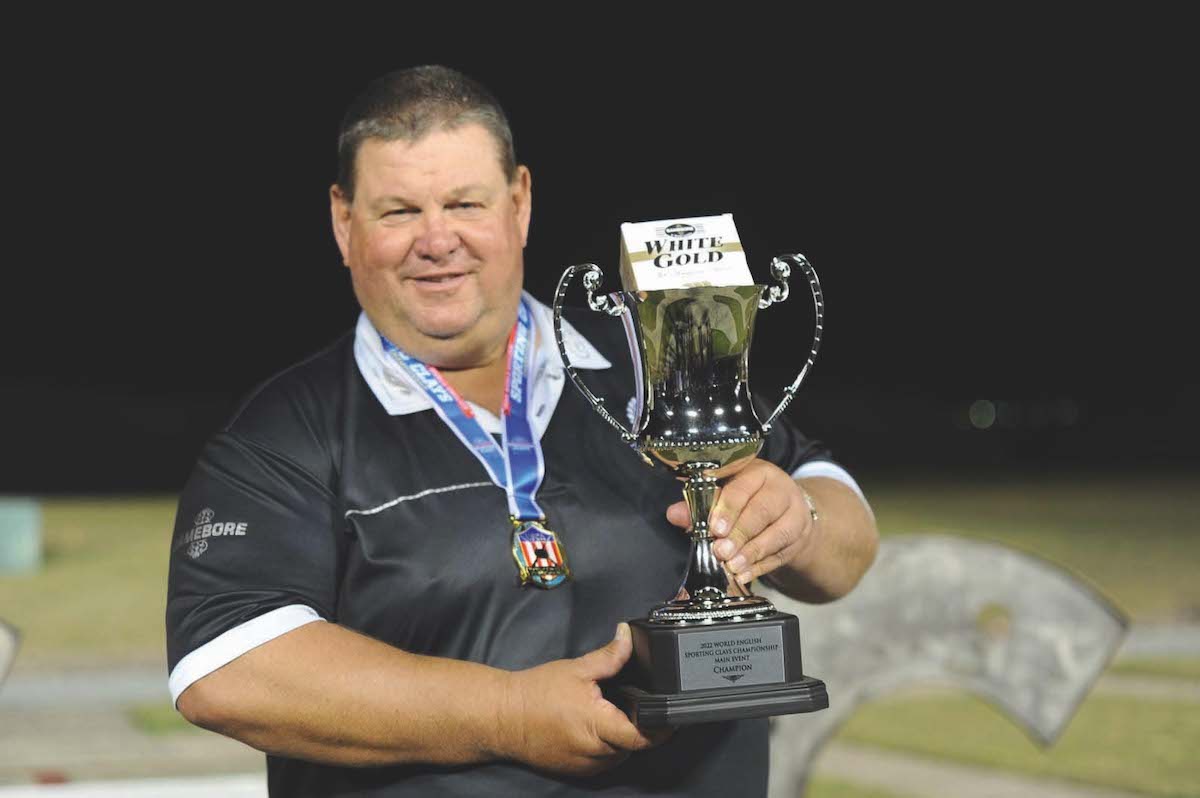
- George Digweed was born in Hastings in 1964
- He started shooting around the age of 12
- He was awarded an MBE in 2009
- He was introduced to clayshooting by his grandfather
- He is considered to be the most complete Shot in the game by competitors
- He is listed in Wisden for his bowling achievement in a Sussex league cup match – five overs, five maidens, eight wickets, zero runs
- He travels the world teaching clay and gameshooting
- He has his own shooting method – which is taught at the George Digweed Academy at EJ Churchill
- He holds the record for woodpigeon – shooting 661 in a single day
- He supports several charities including; The Teenage Cancer Trust, Macmillan Cancer Support, The Lord’s Taverners, Demelza and the Kent & Sussex Air Ambulance
- You can follow him on Twitter @georgedigweed
- He has his own branded champagne, George Digweed Rosé
- In 2016 George and his wife Kate experienced a traumatising burglary when their home was broken into by masked intruders who attacked George and stole money, guns, trophies, medals and his vehicle
- George Digweed has a YouTube channel and a Facebook page
- His guns are made by Perazzi
- He describes his most difficult shot as being: “A late October grouse, downwind and below your feet, shot behind.”
- One of his top tips is to: “Keep still until a driven bird commits to a line upon which you can pretty much do what you want and it won’t change course.”
- Another piece of advice from George is for Guns to stay hydrated. On hot days drink water regularly and stay off the booze the night before shooting as it will affect your concentration and performance.
- When shooting clays he says: “By keeping your shoulders square and level your head will remain in the right place; if you keep your head still, the gun will always be where you are looking.
Going-away targets are often fast out of the trap. If you try and shoot those in the traditional game way, with your gun held down and away from your shoulder, you’ll run out of time as the clay becomes a dot in the distance.” - When he was awarded his MBE he said: “I am not really into personal glorification but this award is great for shooting. Our sport is often overlooked because it is not considered politically correct, so this achievement means a lot. I am very much looking forward to collecting the award from Buckingham Palace. “
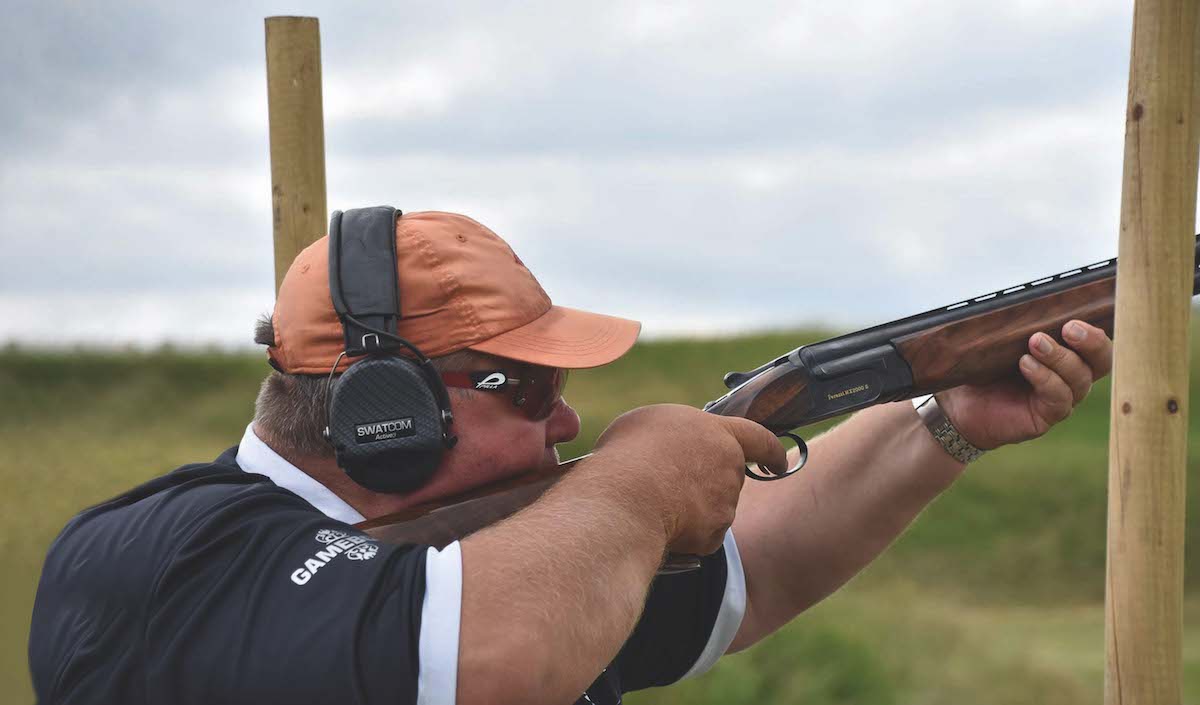
George Digweed continues to be a force on the clay scene
Meeting George Digweed
George Digweed MBE is on top form when we speak in early September, having just taken the CPSA British Open Sportrap title at Barbury Shooting School. The result is all the more remarkable because he shot just hours after flying back from the Compak Sporting World Championship in Cape Town.
Straighting the first two layouts, George dropped just three shots to end with a triumphant 97/100, narrowly ahead of John Lee on 96/100 and Sam Green on 95/100.
“I am really happy with that kind of score,” says George, “especially after just landing back from South Africa. The conditions were good up on the Marlborough Downs, but it was a very difficult competition, with few competitors getting into the 90s until the final squads. I was so pleased to win; I think it’s the best Sportrap I’ve shot for five years.”
For a while, it seemed that the British Open English Sporting title was also within George’s grasp, but unfortunately he made a few errors on stand five, mistakes that he’s now sanguine about. “That stand had five singles and I missed three of them,” he says, “whereas a lot of competitors around me were hitting four or five. If I’d hit just one more target it would have put me in the Super Final and given me a chance for the title. Honestly, I expected to shoot better, but it was just one of those things. Overall, considering how tired I was, I was delighted with the weekend.”
The British Open English Sporting title may have eluded George this autumn but back in the spring, under stormy Texan skies, he proved that he continues to be a formidable force to be reckoned with. On winning the 2022 World English Sporting Championship in San Antonio in late April, he cemented his place in history as the first Shot to have won world championships across five consecutive decades – the 1980s, 1990s, 2000s, 2010s and 2020s. His tally of titles is astonishing and still growing. As we go to press, he has won 27 world titles, 20 European titles and 150 assorted international titles and grand prix competitions.
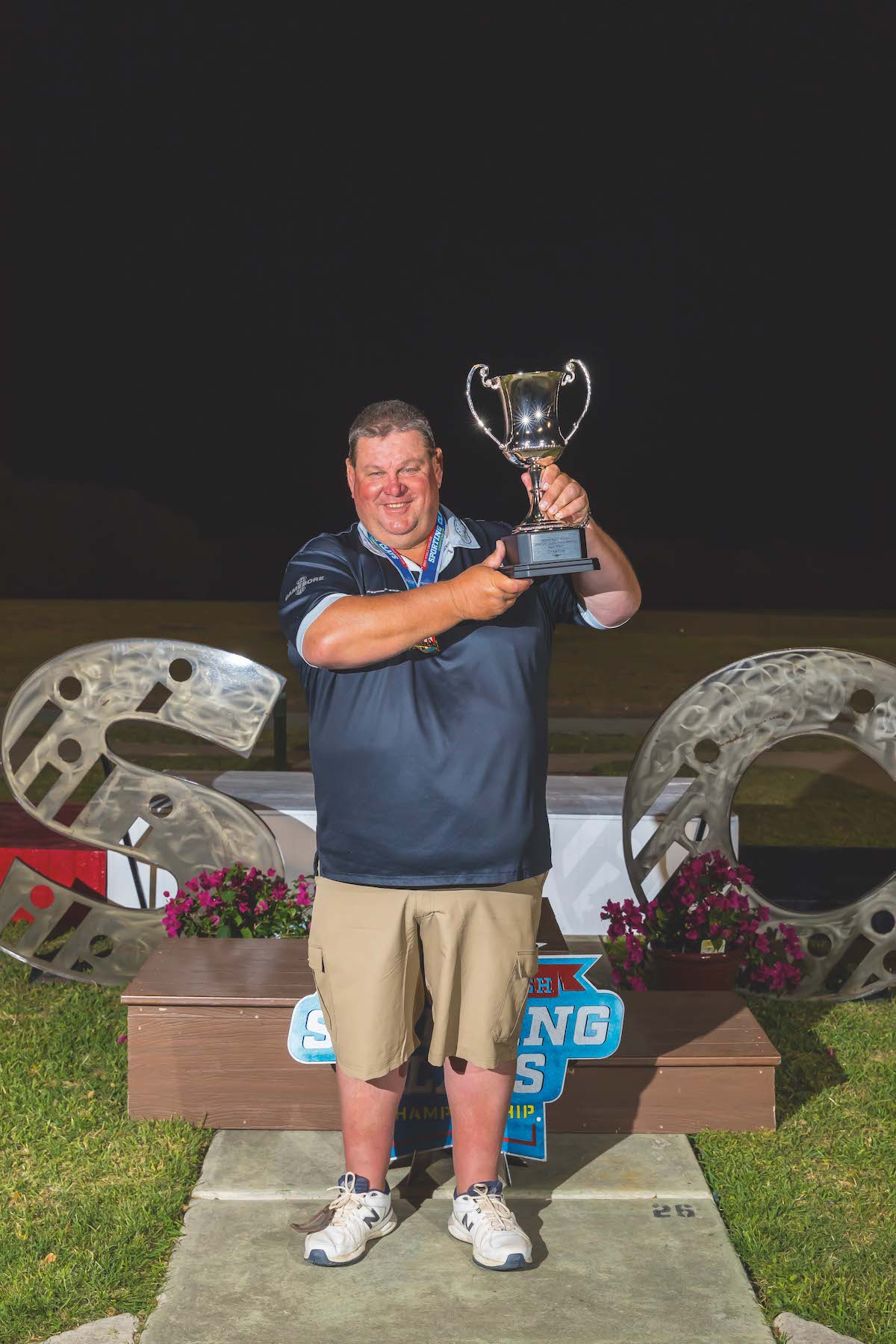
George winning in San Antonio
Early days
Before all the breathtaking wins, the glitzy trophies and the international travel there was an unremarkable boy, brought up in an unexceptional household. George was born in 1964, in Hastings, Sussex, the son of a local butcher, and soon-to-be older brother of legendary DJ John Digweed. For those of you who aren’t familiar with John’s work, he’s arguably even more famous than George, having been voted among the world’s top DJs numerous times since the 1990s.
Trying to make sense of how an ordinary young Hastings family created two international stars, albeit in very different occupations, I asked George whether he remembers his childhood as being particularly competitive? “No, far from it,” responds George. “It was unremarkable. I’ve always been very competitive and so has John, but he wasn’t interested in shooting, and I wasn’t that interested in music, so there wasn’t any conflict. In hindsight, I wish I had been into music, because he’s the most successful one of the family.”
It was George’s grandfather and cousin who introduced him to shooting when he was about 12. He took to it quickly but doesn’t believe he possessed any more talent than the next youngster. He did, however, have drive. “I’ve always worked hard at every chosen sport that I’ve played, but I wouldn’t say that I’m a natural at any of them. I believe that everyone is very, very good at something; I’m just one of the lucky few who discovered what that was early on.
“I also think I have the ability to watch the best in action, and then be able to reconnect in some way with how they do it. By studying the finest Shots of that era, such as Duncan Lawton, Barry Simpson and AJ Smith, I was able to cherry-pick their best techniques, understand them and then apply that knowledge to my own shooting.
“That level of self-learned knowledge helps you in sticky situations. I see a lot of very coached Shots who struggle when they get into a difficult situation because they haven’t got their coach on hand telling them how to shoot a particular target. Building up your own expertise the hard way, by studying others without relying on a coach, will help you to become a more rounded Shot who’s capable of taking on anything. I like to think that whatever situation I’m given, I can find a way out of it. If I can’t, it’s just one of those days.”
No stone unturned
Back in the late 1990s George wrote a book about his career, It’s Got to be Perfect – the George Digweed Story. I was interested to discover whether he considers himself a perfectionist. “When it comes to being competitive,” remarks George, “you can’t leave a stone unturned, which I guess is a form of perfectionism. To get to a world-standard level today is very difficult because the competition is so much greater.
Buy It’s Got to be Perfect – the George Digweed Story here
“Yes, it always has been difficult but even more so now because we have more available leisure time, there’s many more people with disposable income and practice grounds are easier to come by. When I grew up there were fewer shoots and everything was shot on a Sunday. You even had to fill the car up with petrol on a Saturday because there were no fuel stations open on a Sunday. In fact, there were no shops open at all. These days, you can shoot a clay competition every day of the week somewhere in the country.”
When I ask if sponsorship is easier to come by these days, George has mixed feelings. “Potentially, yes,” he agrees, “but everyone keeps calling on the same small pool of sponsors, which puts them under huge pressure. Many are just small family businesses that are asked to provide so much week on week, year on year for very little return. Shooting needs to look beyond our own industry to find new sponsors that are wealthy enough to breathe fresh air into the sport. I’m encouraged to see that the CPSA, with Iain Parker at the helm, is aiming to do just that. “After a major competition I’ll always drop the sponsors an email thanking them for their support, but sadly it’s not unusual for them to tell me that I’m the only one.”
I was keen to learn when George realised that shooting could become a proper career for him. How old was he when he started to have notable successes? “Probably in 1986, when I shot for England for the first time. Once you’ve made that massive step up from being just an ordinary player to international level, then you start thinking ‘there’s something afoot here’. When I shot the Home International Skeet Championship 225 straight, and was awarded international high Gun, I started looking at my shooting career from a different perspective. I thought, ‘I’ve shot for England. Did I let anybody down? No. Did I perform under pressure? Yes. Did I get the job done? Yes. Well, perhaps I’m in with a chance of making something of this then.”
Favourite discipline
George has found top-level success with so many clay disciplines it’s hard to figure out where his heart really lies. Over the decades he’s won the British Open Skeet Championship, the Home International Skeet Championship, a World Cup for Double Trap and World Championships in English Sporting, Compak Sporting and FITASC.
“Sporting was always my main love, but because Skeet gives you such a grounding it’s helped me across all the other disciplines too. With Skeet, you must successfully shoot a very repetitive format time after time but that teaches you consistency, a skill I was able to transfer to my Sporting shooting.” (Read more on Skeet shooting here.)
There have been so many highlights in George’s career, I wondered which title or accolade meant the most to him. And did he have any regrets? “Family-wise, it’s the MBE,” says George, “but for me, my proudest moment was this year in San Antonio winning the world championship. It’s quite something to have won world championships across five decades. As for regrets, none really. There are a few competitions that I should have won, but I just regard those as learning experiences. The only downside of success is that wherever I shoot there are always such high expectations of me, which piles on the pressure. I’m also learning to be more selective about my commitments so that I don’t become overstretched.
“I am indebted to my wife, Kate, without whom I would not have had the success I have. I spend a huge amount of time travelling, and it falls to Kate to run the ship when I’m away. Her input has been massive, and I would not have been able to continue competing at the highest level without her support.”
2022 World English Sporting Champion George Digweed MBE.
“To finish up winning it and complete my personal milestone of winning world championships in five different decades is something I had always hoped for but was unsure if I would achieve it.”
Brilliant! Congratulations! pic.twitter.com/mWG5JCjf81
— Gamebore Cartridges (@GameboreUK) April 25, 2022
The future
So what does the future hold for George? “I can’t be too specific yet because it’s under wraps, but I’m very excited about a clay shooting project with a fellow overseas competitor that we believe is ground-breaking in terms of training and promotion. We’ll be releasing details soon. Also, next February, I’m setting targets with Phil Gray for a new UAE-based clay shoot in Fujairah that has a prize pot of $400,000. I’m hoping it could represent a new era in clay shooting.”
Finally, what’s the most important thing George has learned over his five-decades-long career? “Life is for living, so live it,” he says with a grin.
This article was first written in 2016 and has been updated.
Related Articles
Get the latest news delivered direct to your door
Subscribe to Shooting Times & Country
Discover the ultimate companion for field sports enthusiasts with Shooting Times & Country Magazine, the UK’s leading weekly publication that has been at the forefront of shooting culture since 1882. Subscribers gain access to expert tips, comprehensive gear reviews, seasonal advice and a vibrant community of like-minded shooters.
Save on shop price when you subscribe with weekly issues featuring in-depth articles on gundog training, exclusive member offers and access to the digital back issue library. A Shooting Times & Country subscription is more than a magazine, don’t just read about the countryside; immerse yourself in its most authoritative and engaging publication.



